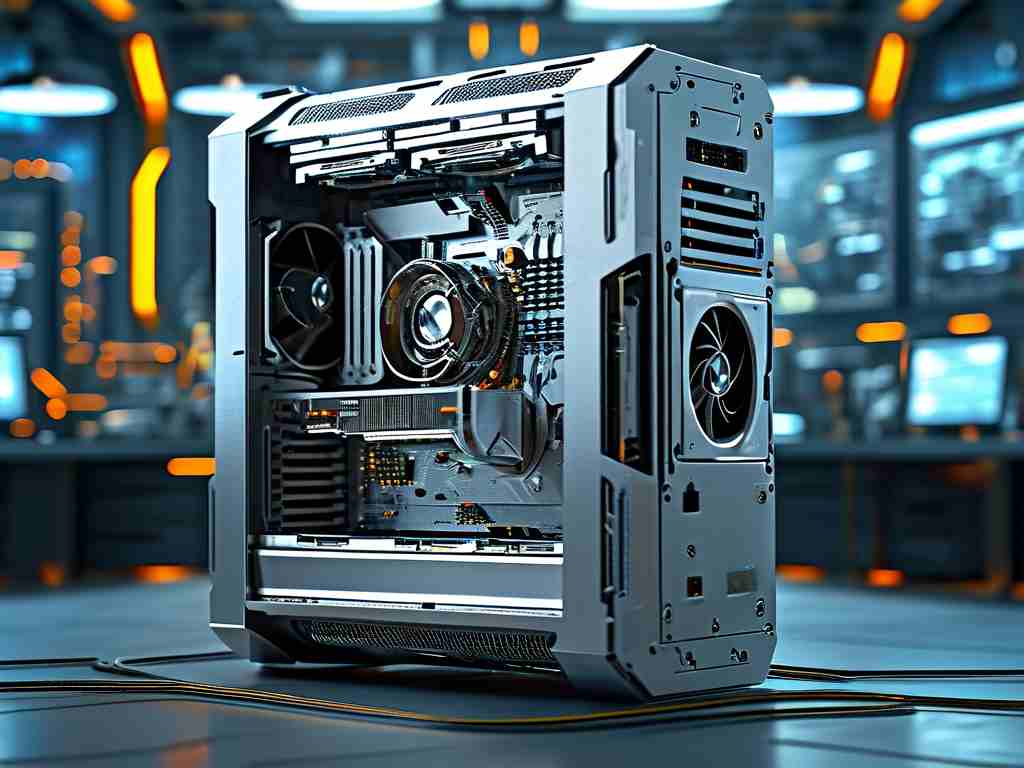The advent of 300TB memory-enabled computing systems marks a paradigm shift in data-intensive operations. Unlike traditional architectures that rely on layered storage hierarchies, these colossal memory configurations enable real-time processing of massive datasets without disk I/O bottlenecks. Modern implementations combine distributed Non-Volatile Memory Express (NVMe) arrays with advanced error-correcting code memory modules, achieving sustained throughput exceeding 12PB/hour in benchmark tests.

At the core of 300TB systems lies revolutionary 3D-stacked die technology. Micron's latest DDR5 DIMMs now pack 256GB per module through hybrid bonding techniques, allowing 1,200+ modules to operate in parallel within standard rack units. This architectural leap proves particularly transformative for genomic sequencing pipelines, where researchers at the Broad Institute have reduced whole-genome analysis time from 14 hours to 23 minutes using memory-resident datasets.
The energy footprint of such systems presents unique engineering challenges. A prototype deployed at the Swiss National Supercomputing Centre employs phase-change coolant immersion, cutting power consumption by 40% compared to conventional air-cooled racks. This thermal management breakthrough enables continuous operation of 300TB memory banks at 85°C junction temperatures without throttling – critical for financial institutions running risk modeling simulations that require 72+ hours of uninterrupted computation.
Industry-specific implementations reveal surprising adaptability. Automotive giant Tesla recently retrofitted its autonomous driving training cluster with 300TB memory nodes, achieving 8× faster neural network convergence by keeping entire 280PB training corpora addressable through memory-mapped files. Meanwhile, climate scientists at NCAR have demonstrated 10km-resolution atmospheric modeling in memory, eliminating checkpoint/restart overhead that previously consumed 34% of simulation cycles.
Security considerations take center stage with such massive memory footprints. New memory encryption protocols like Intel's TME-MK (Total Memory Encryption Multi-Key) now partition 300TB spaces into 4,096 isolated domains, each with independent cryptographic shielding. This architecture proved vital during the 2023 SWIFT banking network upgrade, where multiple financial datasets coexisted securely within shared memory infrastructure.
Looking ahead, the 300TB threshold appears merely transitional. Samsung's upcoming Compute Memory Express (CMX) specification outlines 600TB configurations using 24-layer 3D-DRAM, while quantum memory researchers explore photonic caching techniques that could push capacities into exabyte ranges. As data generation rates outpace storage density improvements, memory-centric computing may well become the default paradigm for 21st-century information systems.
Developers must adapt to this new landscape through tools like persistent memory-aware file systems and NUMA-aware programming models. Microsoft's Project Silica team recently demonstrated full SQL Server operation on 300TB memory pools using direct memory addressing, bypassing traditional storage stacks entirely. Such innovations suggest that the line between memory and storage will continue blurring, fundamentally reshaping how we architect computational solutions.









